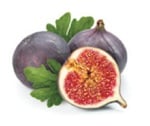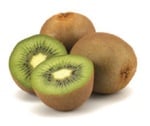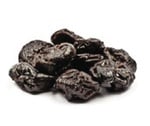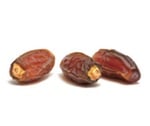|



|
Healthy diet and bowels
A healthy diet containing plenty of different fibre rich foods, lots of fluids as well as exercise is recommended to keep our bowels healthy and regular. Fibre can help protect against diverticular disease, haemorrhoids, constipation and chronic diseases such as heart disease and type 2 diabetes, and can also help with controlling your weight.
Mïeth lawïc ku kayiic
Adë mieth lawïc aye kë la yïc kajuëc ëë wën cï la pïɔth-pïɔth kuat mïth pïath tëkic, dëkdëk ë pïu juëc ku jal athuëc akë luel ba kek looi bïk kayïc kua cɔl arëër ke pïɔl aluöt. Apiɔth-piɔth ë kënë raan kony tïït alɔŋ tuany arëm yäc, kuër rïɛm, la roor kuilku tuɛny-tuɛny wënë kek cïeŋ raan guöp cïtmɛn tuany pïöu ku tuany thok-kër cɔl ‘cuëi rou/type 2 diabetes’, ku eya alëu bï kony ba thïɛkdu walë cuëidu cɔl akor. 
What is fibre?
Fibre is found only in foods that come from plants. This includes vegetables, fruits, beans (legumes), nuts, seeds and cereals (breakfast cereals, bread, pasta and rice).
Apïɔth ë ŋö?
Apïɔth ë yiök thïn tënë ayï kuat miëth ba bei wäl ku jal atim. Kënë kewïc maat thïn kuat wäl cam cït lïïm, mïïth ë tïïm, Kuat Akuem (Käŋuur), kuat roŋ, kuat agor ku kuat rap (miëth cam nhiäkdur, abïk anyop, makorona ku ruth). 
|
| |
The following foods are fibre rich
Katueŋ buɔth cök kë amïth lamot
|
|

|
Vegetables and fruits
Choose fresh, canned, frozen or dried such as sultanas, figs, prunes, and dates.
Kuat wäl cam ke lïïm ku mïth ë tïm
Kuany mïïth tiɔ̈p, mïth tɔ̈u lïlbauic, mïïth cïlïr wulɛ̈ mïïth cï-riel aköl cïtmɛn ŋäp cïriel, laaŋ ciriel, abiëc cïriel ku thänturuk cïdɔny. |
|

|
Cereal foods - high fibre choices
- High fibre breakfast cereals such as natural muesli, bran cereals and oat cereals
- High fibre (wholemeal, wholegrain or grainy) bread, rolls, flat bread and crackers
- Brown rice, wild rice or brown pasta
- Grains such as barley, buckwheat, burghal, chia, corn, millet, oats, quinoa, rice, rye, semolina, sorghum, spelt and wheat
Mïïth rap – miëth nhiär këlamoth
- Miëth nhiäkdur cï looi rap cït gäma, cïmɛn muëthlï, brän thïriɛl ku awuööu
- Abïk lamöt (abïk cï nyop mathiäŋ, abïk cï nyop dë-kou nyum/agor), abïk la roŋroŋ, abïk cït-lɛth ku ayumdïny
- Ruth Mathiäŋ, ruth ror walë makorona mathiäŋ
- Nyïn rap cïtmɛn barley, Aguoth, burghal, akuem madöŋ, anyol, awuööu, ‘oats’, nyïny, ruth, gäma, ŋei, rap malual, nyïny gäma ku Abuɔk
|
|

|
Beans (legumes)
All beans and peas are fibre rich and examples include: black-eyed beans, borlotti beans, butter beans, cannelini beans, chick peas, haricot beans, kidney beans, lentils, lima beans, mung beans, soy beans and split peas. Foods made from these such as hummus are fibre rich.
Akuem (käkur)
Akuem ku akuem maŋok la roŋroŋ ake la mïɔn-mïɔn ku maat akuemkɛn cɔl: akuem makur, Akuem madöŋ, akuem mayen, akuem cïliäp mabiör ku mayen, akuem maŋok la roŋroŋ, akuem cïliäp, akuem malual, Agoth ku adäth, akuem maŋöŋ lakou cuötcuöt, Akuem aguɔth, agoth mïyen ku adäth cï ɣaric. Kuat miëth looi tënë akuem ke la niɔk-niɔk kua piath ke yäc. |
|

|
Nuts and seeds
All seeds such as flax, sunflower, sesame and poppy seeds, and all nuts such as almonds, cashews, hazelnuts, macadamia, peanuts, pine nuts, pistachios and walnuts.
Roŋ ku agor/nyum
Agor/nyum ebënë kecït aye flax, agor ruat (sunflower), nyum ku Agor poppy, ku ruɔŋ ebën akek dëic roŋ almonds, roŋ cashews, roŋ hazelnuts, roŋ macadamia, moguak, roŋ pine, roŋ lɔplɔp ku roŋ walnuts. 
|
| |
How much fibre should I have?
Na ɣɛn kë lamöt yiɛ̈ndï apei bawïc?
Aim for at least 25-30g of fibre each day See the table below for the amount of fibre in different foods.
Kewïc kecït 25–30g ë kë lamöt ba cam aköl tökic Tïŋ wël cï göt pïny ba adäŋ wïc ë kë lamot thïn kuat miëth tëkic ëbënë.
|
| |
| HIGH FIBRE CHOICE |
FIBRE (g) |
LOW FIBRE CHOICE |
FIBRE (g) |
| 1/2 cup cooked green or orange vegetables |
2.5 |
1 cup vegetable juice |
0 |
| 1 piece of fruit |
2 |
1 cup fruit juice |
0 |
| 1 slice grainy or wholemeal bread |
2 |
1 slice white bread |
1 |
| 1 cup cooked brown rice |
1.5 |
1 cup cooked white rice |
1 |
| Breakfast cereal: 2 wheat biscuits or 3/4 cup rolled oats or untoasted muesli |
3.5+ |
One bowl of white or refined cereal e.g. flakes of corn |
0.5 - 1 |
| Beans (1/2 cup) |
7 |
| Mixed nuts (1/4 cup) |
3 |
| KAŊUR NHIÄR YÏ PIÖU |
APIƆTH(g) |
KUËNY KË KOR APÏƆTH-PÏƆTH |
APIƆTH(g) |
| ½ bïny thaal liim alemun |
2.5 |
1 bïny pïu alemun |
0 |
| 1 abaŋ ë menh ë tïm |
2 |
1 bïny pïu menh ëtïm |
0 |
| 1 ade yïc rap kor wale abïk mathiäŋ cï nyop |
2 |
1 abaŋ abïk mabiör |
1 |
| 1 bïny ruth mathiäŋ cï thaal |
1.5 |
1 bïny ruth mabiör acï thaal |
1 |
| Miëth nhiäkdur: 2 ayumdïny ulä ¾ bïny ë oats walë abïk kec nyop |
3.5+ |
Aduŋ töŋ ë anyuöl mabiör walë rap cï guir e.g. kethra ë anyuol cië thiäŋ |
0.5 - 1 |
| Akuem (½ bïny) |
7 |
| Roŋ cï liäp (1/4 bïny) |
3 |
To help you achieve 25-30g fibre each day, try the following:
- Have plenty of vegetables (aim for 5-6 serves every day)
- Choose at least two serves of fruit every day (with skin where possible)
- Choose high fibre cereal foods (wholemeal or wholegrain) more often than white or refined varieties
- Include beans, nuts and seeds regularly in your diet
Tëwïc yïn bï kony ba 25–30g käkur yök aköl tökic, keyi them käk kuany ke cök pïny:
- Ye cam kuat wäl lïm ë cam ke juëc (awïc ba cam tënë ka 5–6 akölaköl)
- Kuany kecït mïth ë tïm karou akölaköl (ke dël të bën röt lëu thïn)
- Kuany miëth nɔŋic käkurdït arët (abïk mathiäŋ cï nyop wulɛ̈ abïk cï nyop dë-kou nyum) ku pal abïk mabiör ɣer walë aliäp nhom
- Maat akuem, kuat roŋ ku agor/nyum aköl luöt thïn cämdu yïc

|
| |
Getting enough fibre each day
Cam kë la pïɔth-pïɔth kueth yï aköl tökic
|
|

|
Choose at least 5-6 vegetable serves each day (plus the skin if edible) of fresh, frozen, dried or low salt canned vegetables.
Kuany tëcit kakor ka 5–6 wäl cam ye luöi raan aköl tökic (maat kë dël të mït yen) ë wën tïɔp, miëth cï riɛl wïr, cï riel aköl wale lïïm nɔŋ köth awai-kor cë taau lïl-baau yïc.
What is a serve of vegetable?
Eŋö ë kuat wäl cam cï raan looi?
-
- Half a cup of cooked broccoli, spinach, carrots, pumpkin, sweet corn and peas
- Abaŋ bïny cï thaal ë lïm cɔl brokkolï, spïnäch, Awäk, abuth, Anyol mit ku akuem
-
- One cup of green leafy or raw salad vegetables
- Bïny töŋ ë yïny magök ulä kuat wäl cam cï looi ke thäläd
-
- Half a medium potato, sweet potato or one medium tomato
- Abaŋ bambe thööŋ rot, babe diny wulɛ̈ potato thööŋ röt
Limit your intake of fried vegetables such as potato chips or crisps
Looi cämdu ëyï cam lïm cï get cɔl akor alɔŋ kecït ayï bambe gët awai
|
| |
|

|
Choose at least two serves of fruit each day (plus the skin if possible). You can have fresh, stewed, frozen, dried or canned fruit in natural juice (not syrup).
Kuany tëcït tënë mïth ë tïm karou bay a cam aköl tökic (maat ke dël rïna mït). Yïn alëu cam këtiɔ̈pou, keliäp, miëth cïlïr, cï riel aköl wale mïth ë tïm töu lïl-bau yïc.
What is a serve of fruit?
Mɛnh ë tïm cï looi bë cam ë eŋö?
- One medium apple, banana, orange or pear
- Two small apricots, kiwifruit or plums
- One cup diced or canned fruit (no added sugar)
- Mɛnh töŋ thööŋ rot apple, banana, alemun walë pear
- Mïthkor karou ŋap, kiwifruit ulä ‘plääm/plums’
- Bïny töŋ ë mïth ë tïm tau lïlbaïc (thoker alïu thin)
-
- 30g dried fruit (11/2 tablespoons of sultanas or 4 dried apricots)
- 30g mïth ë tïm cï riel (1½ Malaga töŋ thiäŋ ku nhuth wale kuany 4 abiëc cï riel)
Some fruits have long been used to keep bowels regular
Mïth tïm kök akek acï looi bë keya cam bï yäc rëër kacïn arëm aköl luöt

Figs
Ŋap

Kiwifruit
Mïth ë tïm cɔl kiwi

Prunes
Laaŋ

Dates
Thäuturuk
|
|

|
Choose high fibre cereal foods (wholemeal or wholegrain) more often than white or refined varieties.
Kuany kuat mïith ba cam ke miëth cï looi rap (abïk mathiäŋ cï nyop walë abïk cï nyop nɔŋ-kou nyum/agor) apei arak juëc pal abïk cï nyop mabior walë abïk cï nyop keril gup arët.
|
|


|
Choose high fibre or wholegrain breakfast cereals
Kuany cäm la piɔth-pïɔth wale miëth nhiäkdur cï looi rap
- Oats, porridge, natural muesli, high fibre wheat or bran cereals
- Rap cɔl Oats, kuïn madïtda, kuat liäp cäm dëic agor, roŋ, rap cï ɣaric, gäma walë cäm cï loi rap cɔl bran
Add fibre to your favourite breakfast cereals
- Sprinkle on nuts or seeds e.g. LSA (linseed, sunflower and almond)
- Add 1–2 tablespoons of bran or flax seed
- Mix your preferred cereal with a very high fibre breakfast cereal
Maat aducduc ë miëth nhiäkdur dun nhiärïc
- Yum piöu roŋ wale agor cïmɛn LSA (mïth nyum, nyum sunflower ku roŋ almond)
- Maat 1–2 malaga ë brän wulɛ̈ agor kuot
- Liäp cämdun nhiär ke miëth nɔŋic kela ducduc ë mieth nhiäkduric
|
|


|
Choose wholemeal bread or grainy bread, toast, rolls, pita bread, pasta or rice
- Wholemeal or wholegrain bread, rolls, pita, lavish, mountain bread or dark rye breads
- Brown pasta (or mix brown pasta with white pasta)
- Brown or wild rice (or mix white rice with brown rice)
- Wholemeal lasagna sheets
- Wholemeal rice in stir frys, risottos and curries
- Grainy crisp bread instead of white crackers
Kuany abïk cï nyop mathiäŋ wulɛ̈ abïk cï nyop de-kɔ̈u nyum/agor, abït tuc, abïk la kuökuök, abïk la pätpät, makorona walë ruth
- Abïk cï nyop mathiäŋ wulɛ̈ abïk cï nyop de-kɔ̈u nyum/agor, abïk la kuökuök, abïk la pätpät, lënh abïk, pamdït abïk
- Makorona mathiäŋ (wulɛ̈ liäp makorona mathiäŋ kek makorona mabiör)
- Mathiäŋ walë ruth ror (wulɛ̈ liäp ruth mabiör kek ruth mathiäŋ)
- Kethra mathiäŋ la pätdɛt
- Ruth cï get nɔŋic rïŋ ku lïm, (ruth cï liäp ke akuem, bambe, abuth), ku keda
- Cäm rap cï nuen ku pal lɔn ba cam abïk cï kou awai
|
|



|
Add high fibre grains when cooking or preparing meals
- Soups: add beans, lentils, split peas or barley
- Salads: use quinoa, brown rice, wild rice, buckwheat or cracked wheat (burghal) for example tabouli
- Baking:
- Use wholemeal flour or oats instead of white flour, for example muffins, pikelets or making oat crumble toppings
- When a well-risen product is required such as scones or cakes use half white flour mixed with half wholemeal flour
- Use wholegrain bread crumbs instead of white for crumbing fish or chicken
Maat nyïn rap deic käkur tënë thaät walë guïr miëth
- Cuai: maat akuem, adäth, akuem cï ɣaric wulë rap cɔl ‘bärlei/barley’
- Thäläd: looi rap, ruth mathiäŋ, ruth ror, mïth wäl cɔl buckwheat (burghal) ku aye nyuɔth ke thöŋ ke yïny abuth cï mïɔc yïc abïk rinke acɔl taboulï
- Nyup abïk:
- Nyop abïk cɔl wholemeal walë abïk rap cɔl oats ku duk-nhom ɣar ba nyop abïk mabior, tïŋ cïtmɛn abïk cï nyop cɔl muffins, pikelets wale nyop abïk cï oats tau yenhom
- Wën na wïc abïk piɛth la köi citmɛn abïk nyop cɔl scones walë ayumdïny (cakes) keyi lööm abïk ɣer mabiör abak ku ba liäp kek abïk amuɔc nyïn mathiäŋ abak
- Lööm abïk amuɔc nyïn mathiäŋ bïn rëc walë ajïthnyop pot-kou ku pal abïk mabiör ɣer

|
|

|
Include beans, nuts and seeds regularly in your diet
Maat akuem thïn, kuat roŋ ku agor/nyum cämdu yïc akölaköl
|
|



|
Breakfast
- Sprinkle nuts and seeds on breakfast cereal
- Try baked beans or peanut paste on high fibre toast
Miëth nhiäkdur
- Wɛr ë roŋ ku agor miëth thiäkdurïc
- Them akuem cï thaal walë ariöm-moguak ba tau abïk ye tuc-kou yïc
Cooking or preparing meals
- Add lentils, whole barley or split peas to soups and meals such as lasagna, casseroles or stews, or choose dishes based on beans such as dahl
- Add beans to pasta dishes such as spaghetti bolognese, burritos, chilli con carne or tacos
Thäät walë guïr miëth
- Maat akuem cɔl adäth, nyïn rap cɔl barley walë akuem cï ɣarïc ë cuai rïŋic ku miëth cïtmɛn ladhanya, rïŋ cï maat ke bambe ku acï thiëth, walë kuany aduuk cï thaal këcït kuat akuem liäp
- Maat akuem thïn aduk makorona yïc bë cïtmɛn thäät cheria cï maat rïŋ cëkep, kathïra cï dëric akuem ku rïŋ, ajera cï mïɔc yïc rïŋ, atïmatïm, kuat yïny liëm ku jal acï thiëth
|
|


|
Salads
Add canned beans, four-bean mix, chickpeas or toasted nuts
Thälaad
Maat akuem taau lïl-bau yïc, ku akuem kaŋuan cï lïap, akuɛm cɔl chickpeas walë kuat roŋ ku moguak cï get
Snacks
- Trail mix (unsalted nuts and dried fruit)
- Popcorn – plain or lightly salted
- Wholegrain crackers and hummus
Kuat mïïth
- Mïïth-cï-lïäp (kuat roŋ kec mïɔc köth awai ku mïth ë tïm cë riel)
- Atoŋanyuol – cïn köth awai wulɛ̈ acï këmïɔc köth awan-kor
- Ayum diny rap cï nyop ku anuetnhom kuïn (hummus)

|
|


|
What about fluids?
Yeŋö na pïu la lëulëu?
Fibre and water work together to keep us regular. Without enough fluid, increasing fibre may result in constipation, so always have enough to drink each day.
Apïɔth-pïɔth ku pïu aluï ëtök tënë cït të yekë ɣok muk thïn aköl luöt. Ciën pïu juëc ë miëthic, ku käk lapïɔth-pïɔth ye camïc känɔŋ kënë raan yök thïn cɔl bëya la ror këril-kou, keya emɛn awïc ba naŋ pïu juëc ë kek dëk aköl tökic.
What drinks should I choose?
Water is preferred over drinks with added sugar (such as soft drinks, cordials, sports and energy drinks) and fruit juice, as water has no calories and will not result in weight gain. Water is also preferred over diet soft drinks and fruit juice as the acidity of these drinks can break down the hard covering on our teeth called enamel.
Na ɣɛn yeŋö ba kuany kedëk käk dëkdëk yïc?
Acïn dët kuany käk yë dekic, apïu akek pïɛth ba ke dëk tënë kädëk kök wën cï ke thok-ker maat thïn (tëmɛn pïu thoda, pïu alemun ke maŋgar, pïu dek kɔc kura ku pïu dïny yï mïɔc riel) ku pïu mɛnh ë tïm kök, cï mɛn ŋïc yen lɔn adï ka pïu acïnïc miök ku acï raan bï cɔl acuai. Pïu ë ya akek pïath tënë pïu thoda ku pïu mïth ë tïm ke cïtmɛn kek pïu-diny kë aŋïc apiɛth lɔndï ka leec cɔl ke malual kua tëden tɔ̈ lec-cök cuët bei abï döŋ kacï la luɛkluɛk.
|
|


|
How much?
As a general rule aim for 1.5–2 litres of fluid per day (6–8 glasses) unless advised otherwise by your doctor. More fluid may be required in hot weather and when exercising.
Pïu juëc këdï arët kek ba dek?
Kecït tënë löŋ ë dëk pïu, elɔn ba bïny-töŋ thiäŋ ku abak bïny thiäŋ dek wälë dek bïny thiäŋ karou 1.5–2 ë pïu aköl tökic (Kubaai ka 6–8) tɛk ke luɔi tëcït tënë cï akïmdu ye luel thïn. Pïu juëc akewïc apei aköl wënë yen tuc aköl ku jal tëwën dë yen thuëc looi. Kääŋ la lëulëu mat kë cït-mɛn pïiu, pïu mɛnh ë tïm, cäi, cäi kɔppïï (coffee), caa (kuïn-rap nhom), cuai, adöŋ-pïïu ë mïïth tïim ku nyäth ë ca cï riel-wïr.
What about tea and coffee?
- Tea and coffee can count as part of your fluid intake
- Tea and coffee (or caffeine drinks) may need to be reduced if you have urinary incontinence. Discuss this with a continence health professional if you have any concerns
Yeŋö nalɔŋ dëk cääi ku koppïï (coffee)?
- Cääi ku Koppïi alëu bï ke kuën ke bakïc ë pïu ca kek dëk
- Cääi ku Koppïï (wale pïu dïny-thoda) awïc ba kek dhuök pïny dëk rïna yïn anɔŋ arɛm ye yök tënë laac. Jam kënë yïc kek akutnhom pan akim të nadï yïn anɔŋ ayï wët alɔŋ pïïr

|
|



|
Boosting your fibre: slowly does it
Ba apiɔth-piɔth du juakï: ka looi amääth
- Increase your fibre slowly. Try making one change per week to avoid gas, bloating, cramps and diarrhoea from building up fibre intake too quickly.
- Plenty of fluids help the fibre work better, so drink more as you increase your fibre
- Juak apiɔthdu yïc amääth. Them ba cäm awaaric ë läät tökic bë kuat alïr cïin-törïc lïu, Kuëi, ariɛm yäc ku jal aa la ror apei tënë käk lapiɔth ca cam cï nhïm kut yic.
- Juëc ë pïu aye kony apei bë käk la piɔth-piɔth ca cam cɔl alui arët, këya dëk pïu juëc kecït na yïn abï käkun la piɔth-piɔth ë cam juakïc.
Fibre supplements
Try to avoid making up for a low fibre eating plan by relying mainly on fibre supplements or foods with concentrated sources of fibre such as bran or psyllium husk. These may give you enough fibre but you will miss out on the mixture of fibre which is needed to protect the gut. If you feel you need a fibre supplement and would like more information, talk to a continence health professional or Dietitian.
Wäl Apiɔth (Fibre supplements)
Them ba naak lɔn ye yï cam käk wën kor kela piɔ̈th kecït bay a cam wäl bï miëth cɔl aköc-kɔ̈u walë kuat mïïth kenɔŋ yïc apiɔth-pïɔth dït arët cïtmɛn rap cɔl gäma wulɛ̈ ayum ë rap cɔl bran. Kek adhïl yïn gäm aluak mïëth kɔ̈u ku yïn abï ciën mïith dë kela pïɔth-pïɔth ca ke liäp wënë wïc bïk yäc tïït. Na yïn ŋïc yïn abï wïc wäl apiɔth-piɔth ku nhiar beyï lëk, ke jam tënë akutnhom pial guöp wale akïm mïëth.

|